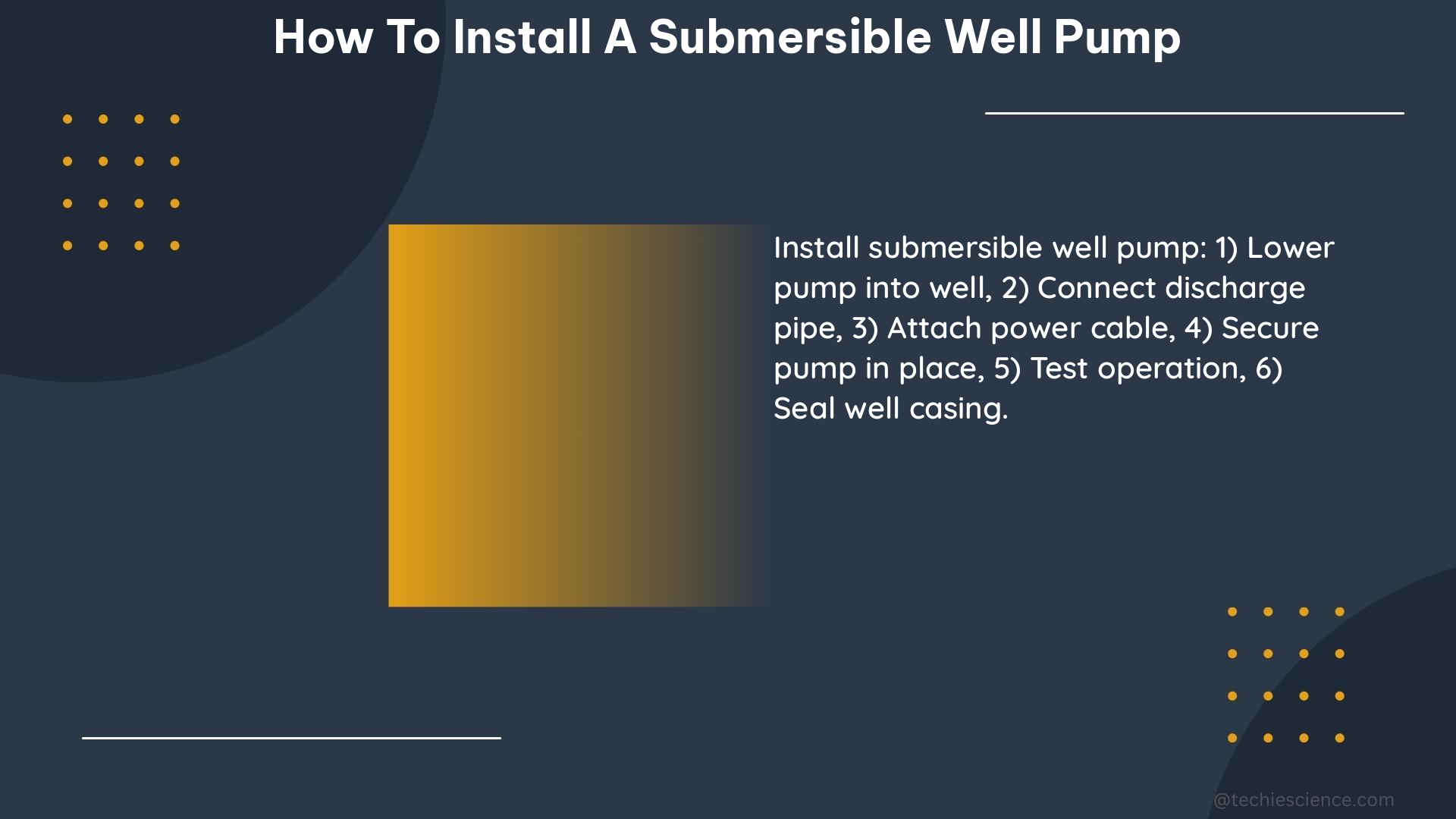Installing a submersible well pump requires meticulous attention to detail and adherence to specific measurements and quantifiable data to ensure a successful and efficient setup. This comprehensive guide will walk you through the step-by-step process of installing a submersible well pump, providing you with the necessary technical information and best practices to get the job done right.
Assess the Static Water Level
The first step in installing a submersible well pump is to determine the static water level of the well. This is the level at which the water stands in the well when no water is being pumped out. Use a sonic water level meter to accurately measure the static water level. For example, the video referenced shows a static water level of 41 feet.[ts:4]
Size the Pump Correctly

Selecting the right pump size is crucial for the well’s performance and efficiency. The pump’s flow rate should match the well’s capacity. In the video referenced, a 1 HP, 8 GPM (gallons per minute) submersible pump was used for a well with a 7 GPM capacity.[ts:108] Ensure that the pump you choose is appropriately sized for your specific well requirements.
Check Insulation Resistance
Before lowering the pump into the well, it’s essential to check the insulation resistance of the pump/motor assembly. This resistance should be at least 20 megohms with no drop cable. Any sudden drop in resistance during the lowering process may indicate potential cable, splice, or motor lead damage.
Inspect the Motor
Verify that the motor model, horsepower (HP) or kilowatts (KW), voltage, phase, and hertz match the installation requirements. Measure the insulation resistance using a 500- or 1,000-volt DC megohmmeter from each lead wire to the motor frame. The resistance should be at least 20 megohms without the drop cable.
Inspect the Pump
Ensure that the pump rating matches the motor and that the pump shaft turns freely. This will help prevent any potential issues during operation.
Assemble the Pump/Motor
If the pump and motor are not yet assembled, check that the mounting faces are free from dirt, debris, and uneven paint thickness. Assemble the pump and motor together, ensuring that their mounting faces are in contact, and then tighten the assembly bolts or nuts evenly to the manufacturer’s specifications.
Verify the Power Supply and Controls
Confirm that the power supply voltage, hertz, and KVA-capacity match the motor requirements. For 3-wire motors, verify that the control box HP and voltage match the motor. Additionally, check that the electrical installation and controls meet all safety regulations and match the motor requirements, including fuse or circuit breaker size and motor overload protection.
Set the Pump Depth
Position the pump far enough below the lowest pumping level to ensure that the pump inlet will always have at least the Net Positive Suction Head (NPSH) specified by the pump manufacturer. The pump should be at least 10 feet from the bottom of the well to allow for sediment build-up.
Recheck Insulation Resistance
As the pump/motor assembly is lowered into the well, check the insulation resistance again. The resistance may drop gradually as more cable enters the water, but any sudden drop indicates possible cable, splice, or motor lead damage.
By following these steps and paying close attention to the specified measurements and quantifiable data, you can ensure a successful installation of a submersible well pump. Remember to refer to the manufacturer’s instructions and local regulations for any additional requirements or guidelines specific to your installation.
Reference:
- Submersible Pump Installation Checklist
- Submersible Pump Installation Video
- Submersible Pump Troubleshooting Video

The lambdageeks.com Core SME Team is a group of experienced subject matter experts from diverse scientific and technical fields including Physics, Chemistry, Technology,Electronics & Electrical Engineering, Automotive, Mechanical Engineering. Our team collaborates to create high-quality, well-researched articles on a wide range of science and technology topics for the lambdageeks.com website.
All Our Senior SME are having more than 7 Years of experience in the respective fields . They are either Working Industry Professionals or assocaited With different Universities. Refer Our Authors Page to get to know About our Core SMEs.